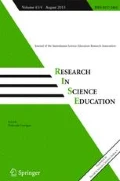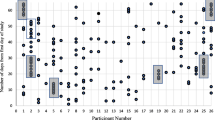Abstract
Venues for informal science education are usually those sought out by people who are specifically looking for an educational experience. Whether planning a trip to a museum or choosing a television program, these individuals are actively seeking an informal educational experience; they are a self-selected group. This paper investigates whether members of the public will respond to an informal science activity that is placed in a location where learning about science would be unexpected. This project developed and used an activity about the cardiovascular system in which participants were able to walk the path of blood flow through the heart, body, and lungs. This activity was tested in two types of settings: where science was either expected or unexpected. A non-traditional assessment method was used to evaluate the effectiveness of the activity in the unexpected versus the expected settings. Ultimately, the activity was found to be equally effective in both settings, providing evidence for success in bringing informal science education to the general population in non-traditional venues.





Similar content being viewed by others
References
(2003). Journal of Research in Science Teaching, 40, No. 2
(2004). Science Education, 88, No. S1
(2006). Science Activities, 43, No. 2
(2006). The Science Teacher, 72, No. 1
(2007). International Journal of Science Education, 29, No. 12
American Heart Association’s Cardiovascular disease statistics (2010). Retrieved April 21, 2010, from http://www.americanheart.org/presenter.jhtml?identifier=4478
Bort, N. (2007). Using the arts to enhance science learning. Science Scope, 31, 56–59.
Bullion-Mears, A., McCauley, J. K., & McWhorter, J. Y. (2007). Erupting with great force: performing text to enhance reading comprehension. Science Scope, 31(1), 16–21.
Gassert, P., & Wenger, G. (2001). See Jane Swing from a string? Science and Children, 38(6), 46–49.
Hommerding, M. (2007). Science prop boxes. Science and Children, 45(3), 42–45.
Kase-Polisini, J., & Spector, B. (1992). Improvised drama: a tool for teaching science. Youth Theatre Journal, 7(1), 15–19.
Muir, S., & Wells, C. (1983). Informal evaluation. The Social Studies, May/June, 95–99
Nano ganz gross. (2010). Retrieved April 21, 2010, from http://www.memspoint.com/index.php?id=70
National Science Board. (2008). Science and Engineering Indicators, pg. 7-14, Arlington, VA, Retrieved September 26, 2008 from http://www.nsf.gov/statistics/seind08/start.htm
Palmer, D. H. (1999/2000). Using dramatizations to present science concepts: activating students’ knowledge and interest in science. Journal of College Science Teaching, 29(3), 187–190.
Sights Unseen. (2010). UW -Madison nano research mixes art with coffee, Retrieved April 21, 2010 from http://mrsec.wisc.edu/Edetc/news/index.html
The City University of New York’s Science and the Arts (2010). Retrieved April 21, 2010, from http://web.gc.cuny.edu/sciart/0506/street_fair_web/
Whitaker, S. (1993). Using dramatic improvisation in science teaching. The Australian Science Teachers Journal, 39(2), 41–43.
Acknowledgments
The authors would like to thank the Delta Program, Prof. Kristyn Masters, Dr. Tom Zinnen, Dr. Kimberly Duncan, Christine Reich, and Elizabeth Kollmann for their support and contributions to this project, and the National Science Foundation through the Materials Research Science and Engineering Center on Nanostructured Interfaces (DMR-0079983 and DMR-0520527) at the University of Wisconsin-Madison. Any opinions, findings, and conclusions or recommendations expressed in this material are those of the authors and do not necessarily reflect the views of the National Science Foundation.
Author information
Authors and Affiliations
Corresponding author
Rights and permissions
About this article
Cite this article
Monzack, E.L., Petersen, G.M.Z. Using an Informal Cardiovascular System Activity to Study the Effectiveness of Science Education in Unexpected Places. Res Sci Educ 41, 453–460 (2011). https://doi.org/10.1007/s11165-010-9174-5
Published:
Issue Date:
DOI: https://doi.org/10.1007/s11165-010-9174-5




